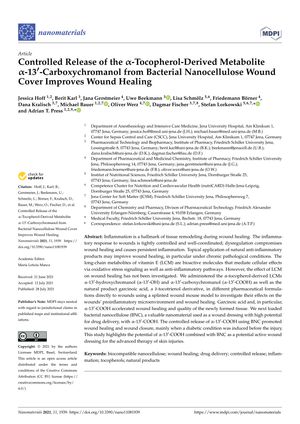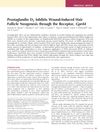Controlled Release of the α-Tocopherol-Derived Metabolite α-13′-Carboxychromanol from Bacterial Nanocellulose Wound Cover Improves Wound Healing
July 2021
in “Nanomaterials”

TLDR Wound covers with α-13'-COOH from vitamin E can improve and speed up wound healing.
The document presents a study on the wound healing effects of α-13'-Carboxychromanol (α-13'-COOH), a metabolite of vitamin E, when released from bacterial nanocellulose (BNC) wound covers. In vitro tests showed that α-13'-COOH positively influenced gene expression related to wound healing in fibroblasts and keratinocytes, as well as cell proliferation and migration. In vivo experiments using a mouse model, including a diabetic wound healing model, demonstrated that BNC wound dressings with α-13'-COOH improved wound closure times, reduced scar formation, and enhanced histological features. The study indicates that α-13'-COOH-loaded BNC could be an effective treatment for wounds, especially in diabetic conditions where healing is typically slower. The number of mice used in the study varied, with some groups having 4 and others having 5 to 9 mice. The findings suggest that the controlled release of α-13'-COOH from BNC wound covers could be beneficial for complicated wound management due to its anti-inflammatory effects and ability to promote better and faster healing.
View this study on mdpi.com →
Cited in this study

research Prostaglandin D2 Inhibits Wound-Induced Hair Follicle Neogenesis through the Receptor, Gpr44
Prostaglandin D2 blocks new hair growth after skin injury through the Gpr44 receptor.